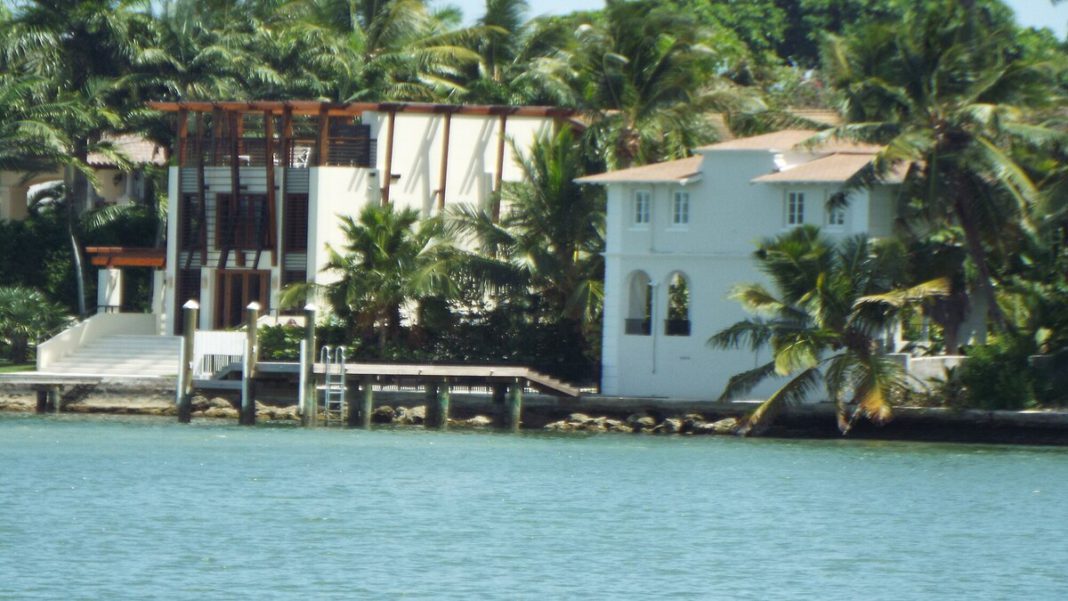UNITED STATES: Al Capone’s infamous waterfront estate in Florida, where the notorious mobster drew his final breath in 1947, has itself been smacked, and preservationists are accusing Florida’s Republican governor, Ron DeSantis, of carrying out the hit.
Earlier this month, the graceful hundred-year-old estate located on a highly sought-after island in Miami was quietly razed. The takedown came after a law was passed by the DeSantis administration in July that removed the authority of municipalities to block the destruction of specific properties, irrespective of their historical significance.
The owner of the Mediterranean-style villa from 1922, along with its guest house, featuring nine bedrooms and formerly showcasing the city’s largest private swimming pool, promptly pursued a demolition permit, concluding an extended effort to preserve the residence where Capone allegedly planned the St. Valentine’s Day massacre.
Observers claim that the law poses an unprecedented threat to Miami’s historic neighbourhoods and skyline, with affluent landowners and developers “salivating” at the prospect of eradicating unprotected older structures with character and architectural value in favour of soulless contemporary “McMansions.”
Paul George, the resident historian of the HistoryMiami museum, said, “The new owner has come along, paid 15 million plus, and decided not to dramatize this thing; just knock it down and present everyone with a failed accomplishment.”
“That’s essentially what happened here; it lost whatever protection it had. The ghost of Al Capone was vivid in Greater Miami all this time, and with the demolition, we lose a sense of place, we lose a picture and an idea of what things were like at a certain time, and we lose that idea of who lived there and how they lived,” he said.
“Now you’ve got a vacant lot, and it’s a lot harder to draw a mental picture of what went on there over the previous 100 years than it would be if the building was still standing,” he further added.
The property had a turbulent recent history, changing owners multiple times and deteriorating until the early 2000s. However, it was restored to its former prohibition-era grandeur in 2015.
The renovation preserved distinctive original elements like a bold, all-black art deco bathroom, as well as the enhancements introduced by Capone following his $40,000 purchase of the house in 1928.
These enhancements encompassed a two-story pool cabana and a guarded sentry house, where armed personnel kept watch over the nearby road.
In 2021, the property was purchased for $15.5 million by Albert Claramonte, a Miami businessman, and his wife, Karise. The couple, who already possessed the neighbouring land on Palm Island, initially aimed to combine the two properties by demolishing the Capone structures. However, this plan was put on hold until the implementation of the new law.
Toni Alum, a spokesperson for the family’s trust, said in November that revealing their intentions for the 30,000-square-foot (0.7-acre) property would “ruin the plans we are working on”.
The mobster’s great-niece, Deirdre Marie Capone, who is the only remaining relative with memories of the “majestic” estate, expressed sadness over its demise. She remembered her great-uncle spending his last years there in solitude and poor health between the years of his death from a heart attack following a syphilis-induced stroke in January 1947 and his 1939 release from Alcatraz after serving seven and a half years for tax evasion.
“The whole family would come from Chicago and gather around my uncle every Christmas. I kind of grew up there; I learned to swim there, and I learned to ride a bike there,” said Capone.
“I have a lot of early memories of playing there and being in the pool with my dad and my uncle; it was an unbelievable piece of property. It was a symbol of what Miami Beach was back in the beginning, and when you were in the house, you’d feel old Florida,” the 83-year-old added.
In May, DeSantis officially signed the Resiliency and Safe Structure Act into law. With very few exceptions, it eliminates towns’ right to prevent the demolition of any coastal or flood zone structure deemed a hazard or not up to code, regardless of whether it is considered historic locally.
Republican state senator Bryan Avila, who sponsored the law, emphasised its necessity in expediting the demolition of hazardous or deteriorated buildings prone to collapsing. He clarified that the law wasn’t designed to facilitate the interests of profit-driven developers. “Ocean Drive is not going to get bulldozed,” he said to legislative colleagues in April.
However, critics contend that the law is yet another instance of DeSantis trying to gain more power because it allows for precisely that possibility. The governor has previously exercised control over matters that were previously under the jurisdiction of other bodies, such as higher education, the creation of voting districts, and the requirement that towns continue to use fossil fuels. He has also taken charge of Disney, the state’s largest private employer.
Florida Politics’ analysis of the law highlights that many renowned structures and neighbourhoods in the vicinity of Miami have lost their safeguard, which includes the Art Deco design district, the South Beach Versace mansion, and the Delano hotel.
Sarah Giller Nelson, chair of the Miami Beach design review board, said, “It’s government overreach, and it’s going to have a detrimental effect on the character of our city that we’re already seeing with the Capone House.”
“Boards like the one I chair ensure the quality of design compatibility within the community, and the law completely does away with our authority and input. It’s deflating,” Nelson continued.
Also Read: Donald Trump Raises $7.1 Million since Arrest at Atlanta Jail



